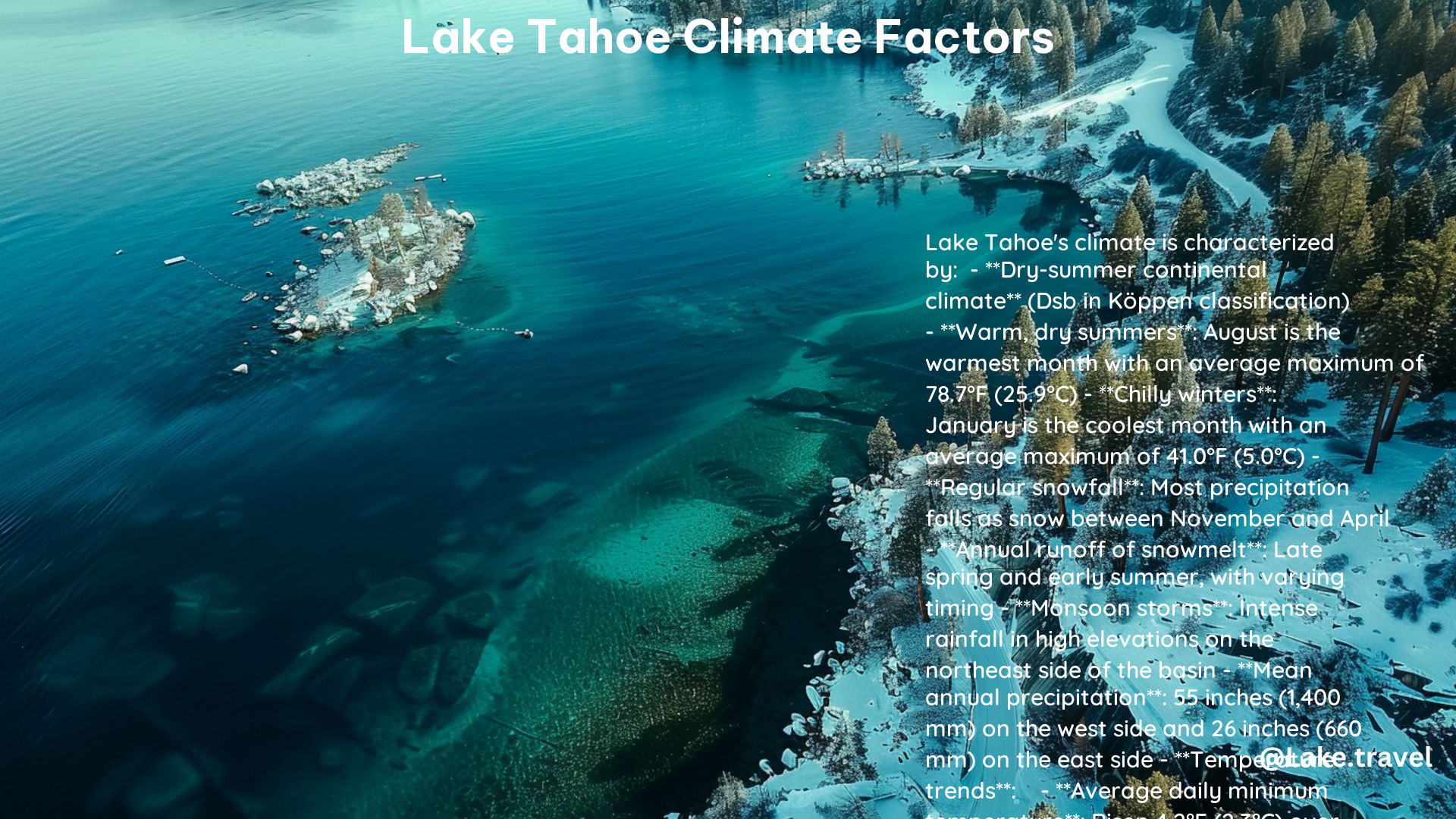Lake Tahoe, nestled in the heart of the Sierra Nevada mountains, is renowned for its stunning natural beauty and diverse outdoor activities. However, the region’s climate is a crucial factor that shapes the environment and influences the experiences of visitors. In this comprehensive blog post, we’ll delve into the key climate factors that define the Lake Tahoe area, providing valuable insights for lakes touring enthusiasts.
Average Annual Precipitation
The Lake Tahoe region experiences a significant variation in annual precipitation, with the west side of the basin receiving over 55 inches (1,400 mm) on average, while the east side near the lake itself receives around 26 inches (660 mm). This disparity is largely due to the rain shadow effect created by the Sierra Nevada mountains, which block moisture-laden air from the Pacific Ocean, resulting in a drier climate on the eastern side of the basin.
Temperature Fluctuations

The temperature range at Lake Tahoe is quite dramatic, with significant variations throughout the year. During the warmest month, August, the average maximum temperature reaches 78.7°F (25.9°C), while the average minimum temperature is a chilly 39.8°F (4.3°C). In contrast, the coolest month, January, sees an average maximum of 41.0°F (5.0°C) and an average minimum of 15.1°F (-9.4°C). These temperature extremes can have a profound impact on the lake’s ecosystem and the activities available to visitors.
Climate Change Impacts
The Lake Tahoe region is not immune to the effects of climate change, and the impacts are becoming increasingly evident. Since 1910, the percentage of precipitation falling as snow has declined, and the average water temperature of the lake has increased by 1.4°F since 1970. Moreover, the lake has been warming at a record rate of 0.3°F per decade since 2012, which can lead to a range of ecological issues, such as increased algal growth and disruptions to the delicate balance of the lake’s ecosystem.
Seasonal Variations
The climate of Lake Tahoe is characterized by distinct seasonal variations, each with its own unique features:
Winter
The winter months, from November to April, bring significant snowfall, with the majority of the precipitation occurring during this period. This is a critical time for the lake’s ecosystem, as the cooling of the surface waters and the subsequent sinking of the denser, oxygen-rich water helps to sustain the lake’s diverse aquatic life.
Summer
Summers at Lake Tahoe are relatively stable, with warm temperatures and low precipitation. The lake’s water temperature is highest during this period, which can contribute to increased algal growth and other ecological challenges.
Climate Change Mitigation and Adaptation
In response to the impacts of climate change, various initiatives are underway in the Lake Tahoe region to address these issues. The Sustainable Communities Program and the Lake Tahoe Climate Adaptation Action Portfolio are two examples of efforts aimed at mitigating the effects of climate change through reduced greenhouse gas emissions and adapting to the changing climate through sustainable planning and management practices.
By understanding the unique climate factors that define the Lake Tahoe region, lakes touring enthusiasts can better prepare for and appreciate the diverse experiences the area has to offer. Whether it’s enjoying the winter wonderland or exploring the lake’s pristine waters during the summer, this knowledge can enhance the overall enjoyment and appreciation of this remarkable natural wonder.
